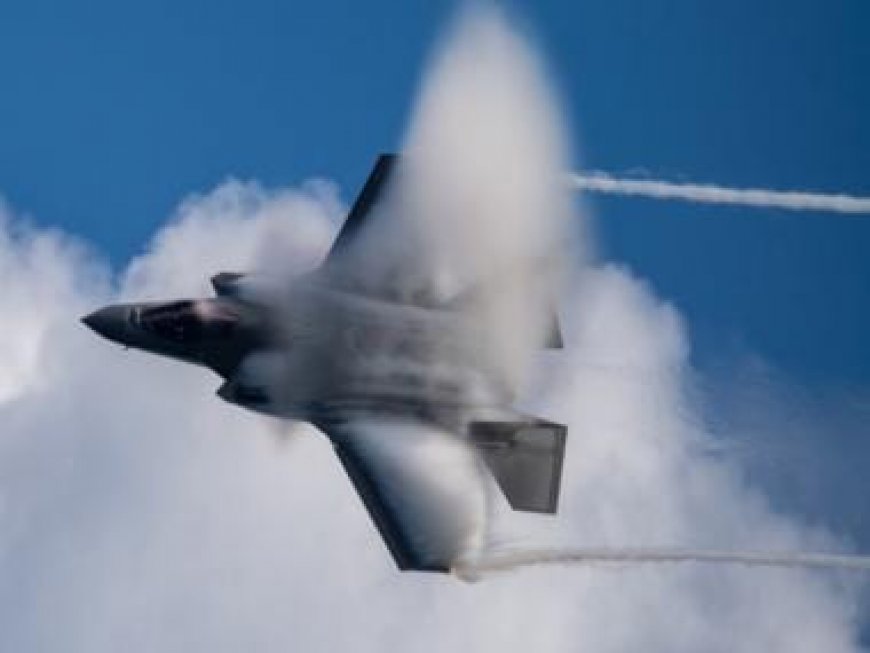Lost and Found F-35: Pilot parachuted, lost sight of his plane, called 911 for ambulance BUT...
Lost and Found F-35: Pilot parachuted, lost sight of his plane, called 911 for ambulance BUT...

An audio recording has emerged of the military pilot who found himself in a bewildering situation after an emergency weather situation made him eject from his advanced F-35 fighter jet, leading to its crash.
The pilot, aged 47, was heard making repeated pleas for an ambulance in a 911 call from a residence in South Carolina, where he had safely parachuted to the ground. The audio recording was released to The Associated Press on Thursday.
The four-minute recording captures the puzzling circumstances involving three individuals: a North Charleston resident calmly explaining that a pilot had parachuted into his backyard, the pilot himself who had lost track of his F-35 jet, and a dispatcher struggling to make sense of the situation.
“We have a pilot in the house, and it appears he landed in my garden. We’re requesting an ambulance to the house, please,” said the resident.
The pilot, who reported feeling “OK” except for some back pain after ejecting from the aircraft at an estimated 2,000 feet, emphasized the urgency of the situation. “Ma’am, a military jet has crashed. I’m the pilot. We need immediate rescue assistance,” he pleaded. “I’m uncertain about the whereabouts of the airplane. It must have crash-landed somewhere. I had to eject.”
Later in the call, he reiterated his need for medical help. “Ma’am, I’m a pilot in a military aircraft, and I ejected. I descended on a parachute. Can you please dispatch an ambulance?” he implored.
The Marines have described the pilot as an experienced aviator with decades of experience in the cockpit.
The incident occurred on Sunday when the F-35 experienced a malfunction, leading the pilot to eject over Charleston and land in a residential backyard not far from Charleston International Airport. Astonishingly, the fighter jet, which the Marine Corps stated was flying at an altitude of only about 1,000 feet, continued flying for 60 miles before crashing in a rural area near Indiantown. The search for the wreckage took over a day.
In a separate 8-minute dispatch call also released to the AP, an unidentified official tried to convey that they had “a pilot with his parachute” but lacked information about the fate of his plane or any reports of a crash. He explained that “the pilot lost sight of it on his way down due to the weather.”
The Marine Corps proposed that a feature on fighter jets designed to safeguard pilots during emergencies might explain how the F-35 maintained its course. They clarified that if the jet remained stable in level flight, the flight control software would attempt to keep it steady, assuming there was no longer a pilot at the controls. This feature is designed to protect pilots in case of incapacitation or loss of situational awareness.
However, several questions remain unanswered, particularly why the plane wasn’t tracked as it continued flying over South Carolina and why it took more than a day to locate a massive fighter jet that had flown over inhabited, albeit rural, areas.
The Marines suggested that features designed to erase a jet’s secure communications in the event of an ejection might have complicated search efforts. These features are meant to protect both the pilot’s location and the plane’s classified systems. Typically, aircraft are tracked using radar and transponder codes, but upon pilot ejection, the aircraft is programmed to erase secure communications.
Furthermore, the plane would have transmitted an identifier on an open channel to determine whether it was friend or foe. However, depending on factors such as radar strength, weather conditions, altitude, and terrain, air traffic control may not have been able to pick up the signal. Thunderstorms and low cloud cover also hindered the search for the plane.
The Marines stated, “When coupled with the F-35’s stealth capabilities, tracking the jet had to be done through non-traditional means.”
The incident remains under investigation, and the results of an official review board may take several months to emerge. Nonetheless, the Marines believe that the feature that kept the plane flying may have not only saved the pilot’s life but also prevented potential harm to people on the ground.
“The positive aspect is that it appeared to function as intended. Additionally, the silver lining in this case is that the F-35 flew away, avoiding a crash in a densely populated area surrounding the airport, ultimately coming down in an uninhabited field and forested area,” the statement concluded.
What's Your Reaction?


























































